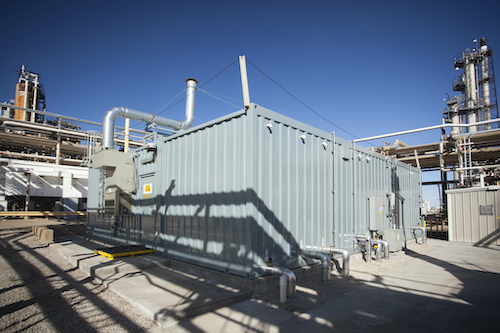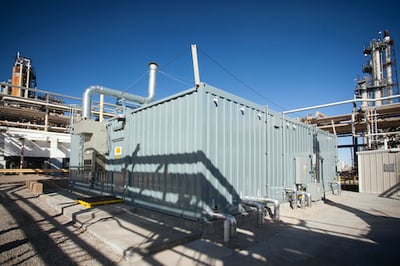What Questions Should You Ask About Blast-Resistant Structures?


This article was originally published in the October 2020 issue of BIC magazine. It was written by Eric Rienbolt, one of RedGuard's subject matter experts and our Custom Projects Manager.
On a daily basis, codes and regulations influence our activities. At their root, they provide minimum standards for safety, health and general welfare that allow us to safely carry out the various responsibilities we perform throughout our workday.
When it comes to blast-resistant buildings, the environment alone can be challenging. Then, if you introduce federal, state and local codes, you better be working with a company that knows what it is doing.
Early on, most blast-resistant building applications were fairly simple. The critical element was (and still is) to simply protect the people and assets inside. Over time, however, the demands on this type of building have expanded dramatically.
In many cases, these buildings have evolved into something much more complicated. That complexity is only compounded when trying to meet applicable codes and regulations. The importance of working with a modular building partner that fully understands not only the core application but also the codes and regulations that now impact them is critical.
RedGuard recognizes that permanent blast applications have moved well beyond temporary structures for turnaround work.  We now regularly see modular blast-resistant buildings being specified in place of traditionally site-built construction. Features like improved quality control, reduced on site construction time frames, ability to meet higher blast loads, and flexibility in design elements can significantly tip the scales in favor of a modular solution.
We now regularly see modular blast-resistant buildings being specified in place of traditionally site-built construction. Features like improved quality control, reduced on site construction time frames, ability to meet higher blast loads, and flexibility in design elements can significantly tip the scales in favor of a modular solution.
Although completely different in their design, blast-resistant buildings are subject to the same codes, regulations and reviews as site-built structures. The unique combination of design elements necessary for blast resistance and typical building codes can often create conflict in that process.
All specific details of the project must be fully understood to ensure success. Some of these details may include fundamental elements like the general footprint, desired height, and what kind of spaces are required on the inside. But even more critical is knowing the details of the potential exposure.
Considering blast exposures is the obvious starting point, but it’s also good practice to ask questions about other lifesaving elements and threat requirements. Some of the questions you should ask include:
- What’s the electrical classification of the area?
- Does toxic release need to be considered?
- Is there an exterior fire threat?
- Does the building require positive pressure?
- Is there a shelter-in-place requirement?
Once we understand the threat requirements, we can start evaluating how any federal, state or local codes might affect the building. For example, does the state require ADA access? Are there specific energy code requirements that could affect the insulation values or HVAC efficiencies? (An example of a conflict could be needing to increase the building height to accommodate extra insulation and more extensive ductwork due to a pressurized system.)
Building codes and state-specific requirements can be challenging since they vary from state to state. Consider two buildings with similar application requirements, but shipping to two different states. They may be required to have very different final designs due to the specific state and local codes. Many states also have their own review programs relating to modular constructed buildings. Some programs require approval before buildings are delivered. On site and in-progress inspections are common as well.
When working with a vendor that understands and scrutinizes all those factors, you should expect to answer many questions relating to the application and the specific scope of work. We’ll evaluate and add all the other critical elements to make sure it not only meets the requirements for the application but also meets state and local code requirements. The good news is that once those elements are identified and understood, the design concept is well on its way.
If a formal scope or specification has not been created, no problem. The knowledgeable sales team at RedGuard can work with you to develop a concept that incorporates not only the critical lifesaving features but also all design elements for making it a compliant, comfortable and productive workspace.
For more information about blast-resistant buildings, or to speak to the writer of this blog post, schedule a call today.
Eric Rienbolt
Eric Rienbolt lives in Central Illinois and is the North American Sales Manager for RedGuard. He has been with the company since 2012, in several different capacities within the sales department, including extensive work with custom projects.

